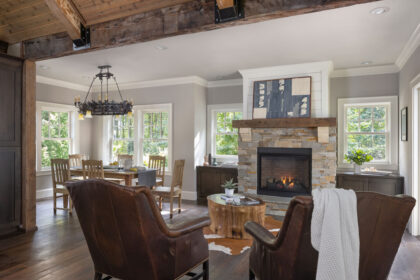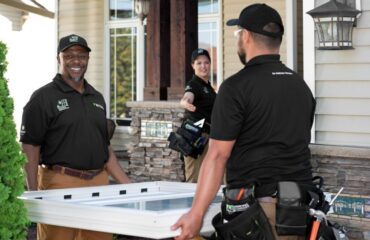
Given our current economic climate and the ever–increasing need for cost–savings and energy efficiency in and around our homes, I wanted to address the popular notion out there that blinds–between–the–glass windows and doors are highly energy efficient, (in part thanks to those internal blinds).
The reality is, however, that they have all the energy efficiency of windows from the 1930s. In other words, not much at all!
Of course, windows or doors with window treatments permanently sealed between the glass in the airspace have their appeal. Since the blinds or shades are sealed inside glass they cannot get dirty, so homeowners are attracted to the idea of maintenance–free window coverings. And their cordless design makes them safer for homes with children or pets.
But some homeowners are buying them believing that they are saving money by avoiding the cost of window coverings, little realizing the underlying cost in terms of lost energy efficiency.
So why do between–the–glass blinds perform so poorly when it comes to energy efficiency? To answer that, we need to first understand why modern windows are energy–efficient.
Window Science at Your Service
Modern windows are smart windows, and window science has completely changed how we understand energy efficiency. We’ve known for some time that glass by itself is a poor insulator; however, double–paned windows created a revolution in the window marketplace. With double-paned windows, the two pieces of glass seal a layer of air between them. This sealed layer of air provides most of the insulation in a double–paned window.
But there was another revolution in energy efficiency on the horizon, thanks to Low–E glass and argon gas. Low–E (low–emissivity) is a thin coating of transparent metallic material that’s applied to window glass for insulating purposes. The Low–E coating helps to prevent heat gain (or loss) in your home by acting as a kind of reflective shield, pushing radiant heat that tries to pass through the glass back to the source it originates from. Argon is a heavy, invisible, non–toxic gas that is a far better insulator than air—the weight of this gas dramatically reduces the amount of heat that can pass through the space between the panes of glass.
However, many blinds–between–the–glass windows and doors are constructed like a glass “sandwich.” In other words, the blinds are inserted between two panes of glass. A Low–E coating is not applied, because silver oxide is especially sensitive to scratching, and there is minimal room in a glass sandwich with a blind for the maximum benefit of an argon gas fill.
There’s simply no way a window with between–the–glass blinds can reduce your energy bills as much as a sealed double–pane window.
The Triple Pane Solution
With time, and in an effort to make windows with blinds between the glass more energy–efficient, some window companies turned them into triple–paned windows. That means you now have three pieces of glass with two spaces in between: one space holds the between-the-glass blinds, while the other space has a Low-E coating and argon fill.
While triple–paned windows with blinds between the glass may be slightly more energy efficient, that extra piece of glass makes the windows bulkier and much more expensive. That’s because glass is heavy. To support three pieces of glass, you need a bigger window frames. Bigger window frames cover up the glass. (Less glass means less view!)
And triple–paned windows are significantly more expensive. You’re basically paying for two windows—one with modern, energy–efficient technology, and one with between–the–glass blinds. So you could save a lot of money and get equal or better energy performance from energy–efficient, double–paned windows with Low–E coatings and argon gas.
The Blinds Between: Innovation without the Science
As for the claim that the internal blinds absorb solar heat gain, well, that is simply not possible. The internal blinds cannot absorb the solar heat gain. The only thing a blind can do to improve energy efficiency—whether it is inside your window or on the outside—is to block direct sunlight from beating into your rooms. Just as any curtain, drape or shade would! So wherein lies the benefit of blinds between the glass?
Bottom line? Low–E is absolutely essential for any sort of significant energy efficiency. This is the only way to reflect radiant heat back to the source. Otherwise, heat transfers easily through the glass sandwich—blinds or no blinds.
My advice? Buy your energy–efficient replacement window and then go choose a gorgeous drapery or window covering that suits your room and pleases you. But, if you still really like the blinds–between–the–glass window or door option, just shop around to find the manufacturer or the company that provides Low–E as a minimum feature or Low–E and gas, which is even better and which, of course, means you’ll be choosing the triple pane solution.





